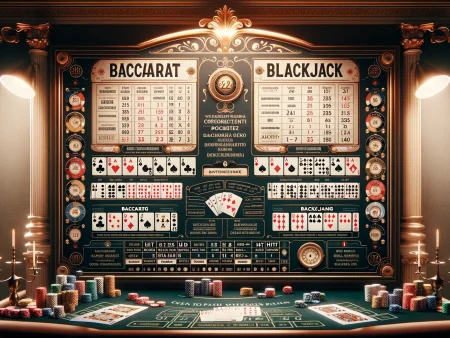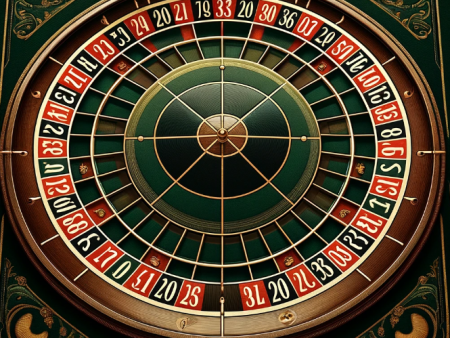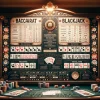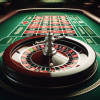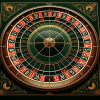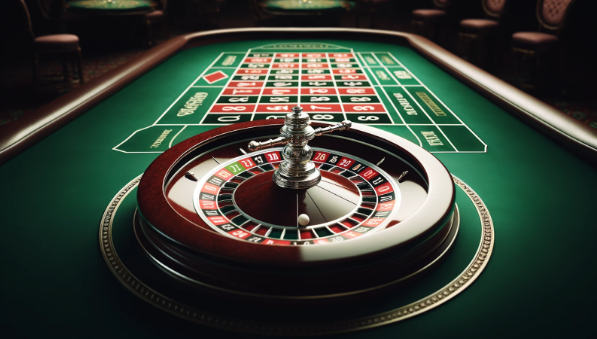
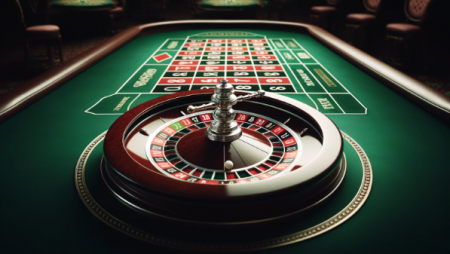
The history of English roulette begins in the Middle Ages, which makes this game one of the oldest creations in the world of gambling.
The precise origin may vary depending on the anecdotes. We found games resembling roulette in Asia, Italy and especially France.
It was the French mathematician Blaise Pascal who allowed this creation to take a new direction by analyzing the trajectory of the ball in the cylinder.
Subsequently, gaming establishments began to rely on this stratagem for roulette, and the emergence of this creation arrived in the 17th century in Europe.
A few decades later, we found the first modern roulette in the prestigious Monte Carlo casino, which is still popular today.
Many variations are emerging, such as French roulette, American roulette and English roulette, which is also called European roulette.
The Rules of English Roulette
If English roulette appeals to so many players all over the world, it is certainly because its operation is particularly simple to assimilate.Our experts have prepared clear and precise explanations so that this extremely popular table game has no more secrets for you.
Below you will find the aim of English roulette, the glossary, the progress of the game as well as the potential bets.
The Aim of English Roulette
English roulette features a playing mat as well as a cylinder within which a ball will rotate until it stops in a segment.
The main goal is to determine in which location it will stop its race, by betting on the right number, the right color or even on the value of the number in question.
There are 36 numbers on an English roulette table, made up of 18 red numbers and 18 black numbers.
A final location highlights a 37th number, represented by 0, which is green in color.
To place a bet, we invite you to place your chips on the game mat which highlights all the numbers, as well as the simple odds which we will come back to later.
Understanding the English Roulette lexicon
English roulette highlights a particular language, which only those who are used to playing can understand.
This is why we have designed a glossary of phrases that can be announced by the dealer during a round of English roulette.
| Event | Description |
| Make your bets | Start of the period reserved for taking bets |
| The bets are made | Moment when the dealer throws the ball into the cylinder |
| The chips are down | The time reserved for betting is now over |
| 7 odd red and missing | Example of an announcement from the dealer when the ball falls |
| Nothing on the number | Announcement made when no player has bet on the correct number |
| No further bets | Announcement made when the ball comes out of the cylinder |
Bets and Winnings at English Roulette
To fully understand English roulette, you will first need to master the different possible bets and potential winnings.
This will allow you to adapt your bets according to your playing style. We have prepared some explanations on this subject below.
The winnings shown in parentheses correspond to the multiplier you will win + the starting stake, which is included in these values.
| Bet Type | Description | Payout |
| Full number | Bet on a single number | x36 |
| Horse bet | Bet on 2 numbers at the same time | x18 |
| Cross bet | Bet on a line of 3 numbers | x12 |
| Square | Bet on 4 numbers with a single chip | x9 |
| Sixain | Bet on 6 numbers with a single chip | x6 |
Outside Bets at English Roulette
- Red or Black: bet on the color of the number (x2)
- Even or Odd: bet on the value of the number (x2)
- Pass or Miss: bet on numbers between 1 and 18 (Miss) or 19 and 36 (Pass) (x2)
- Dozen: bet on numbers between 1 and 12, between 13 and 24 or between 25 and 36 (x3)
- Column: bet on one of the 3 columns (x3)
Zero at English Roulette
Zero is particular to English roulette. First of all, you will have noticed that this is the only location that has a unique color, namely green.
It will obviously be possible to bet on this number, which will allow you to win 35 times the initial stake + your bet if successful.
This number is original because when it comes out, the bets placed on the colors (Red and Black) are not completely lost.
The particularity of English roulette is that you can recover half of the bet when 0 comes out, which is very interesting for players who are used to playing these simple chances.
Winning Tips at English Roulette
We have played English roulette many times, and we have therefore tested several tips to play optimally and limit losses.
Before detailing some of them, we would like to point out that there is no technique that guarantees you will make gains.
The Martingale at English roulette
A true institution in the world of gambling, the martingale is certainly the trick most often used by players on English roulette tables.
This strategy consists of multiplying the bet by 2 when you lose a round of play. Consequently, you will have to play on simple chances only.
However, this trick has limitations since it is banned on many sites and there is usually a maximum betting limit.
| Round | Bet Amount | Outcome | Total Loss | Total Win/Loss |
| 1 | $10 | Red 7 | -$10 | -$10 |
| 2 | $20 | Black 14 | -$30 | -$30 |
| 3 | $40 | Red 3 | -$70 | -$70 |
| 4 | $80 | Black 32 | -$150 | -$150 |
| 5 | $160 | Red 11 | -$310 | -$310 |
| 6 | $320 | Black 17 | -$630 | -$630 |
| 7 | $640 | Red 9 | -$1270 | -$1270 |
| 8 | $1280 | Black 28 | -$2550 | -$2550 |
| 9 | $2560 | Red 5 | -$5110 | -$5110 |
| 10 | $5120 | Black 23 | -$10230 | -$10230 |
The Andrucci Method at English Roulette
The Andrucci method is probably not the most well-known strategy, but it is certainly the simplest to understand.
This strategy consists of betting on the numbers that have come out previously, even if the probabilities are reset to 0 with each new round of play.
We find this tip to be particularly complicated because it requires you to play on numbers, while the other techniques allow you to bet on simple odds.

